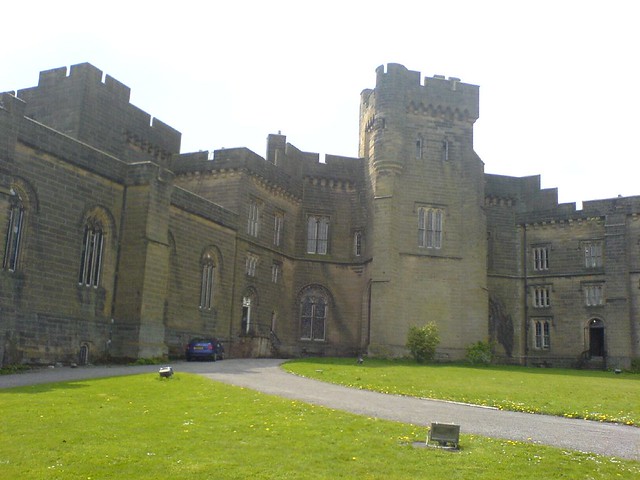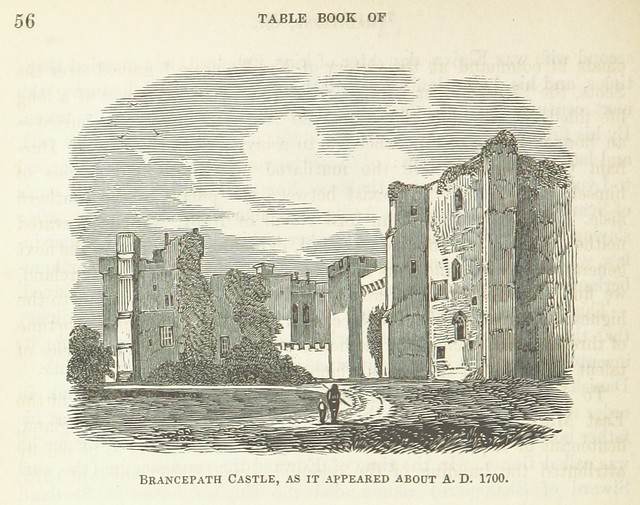Topics > County Durham > Brancepeth > Brancepeth Castle
Brancepeth Castle
The first castle in Brancepeth was a Norman castle built by the Bulmer family. It was rebuilt by the Neville family during the 14th century and it stayed in their possession until it was confiscated by the Crown following the family's involvement in the 1569 Rising of the North. The castle was renovated in the 1820s. During the First World War, Brancepeth Castle served as a hospital for wounded soldiers. Today the castle is privately owned and is Grade I listed on the National Heritage List for England.
A succession of buildings has been on the site. The first was a Norman castle built by the Bulmers, which was rebuilt by the Nevilles in the late 14th century. For many years the castle was owned by the Neville family until in 1569 it was confiscated by the Crown following the family's involvement in the Rising of the North.
There have been a number of other owners since that time. In the early 17th century the estate was granted by the Crown to Robert Carr, 1st Earl of Somerset, from whom it subsequently confiscated the castle back due to his involvement in a poisoning scandal. In 1636, three men who had bought the castle from the King's Commissioners in 1633 sold it to Ralph Cole of Newcastle. His grandson, Sir Ralph Cole MP, sold the property on 9 April 1701 to Sir Henry Belaysyse, whose daughter was involved with Bobby Shafto and who was said to have inspired the famous song. In 1796 the castle was acquired by the Russells.
The present building is largely a 19th-century restoration carried out in the 1820s by John Matthew Russell and improved in the mid-19th century by architect Anthony Salvin for William Russell, (High Sheriff of Durham in 1841). During the First World War the castle was used as a hospital by convalescents from Newcastle General Hospital. In 1939 it became the regimental headquarters for the Durham Light Infantry, who erected a military camp of over 100 huts to the south of the village during the Second World War. The Durham Light Infantry left the Castle in 1962.
The castle is now privately owned by the Dobson family. Margaret Dobson, wife of publisher Dennis Dobson, bought the castle in 1978 to store the company's stock of books when the lease on its Notting Hill premises expired. Her husband died that year before the move north, but the family moved nevertheless and Margaret Dobson did much to restore the fabric and interior of the building, including the lead roof, which had been stripped by an earlier tenant. She refurbished many of the main function rooms for use as a venue for auctions and twice-yearly craft fairs, Shakespearean plays were staged in the main courtyard, and rooms were rented to post-graduate students at Durham University and other tenants. Margaret Dobson died aged 86 on 19 October 2014, leaving four sons and three daughters.
Visit the page: Brancepeth Castle for references and further details. You can contribute to this article on Wikipedia.

from http://www.brancepethcastle.o…
Brancepeth Castle - offical Websie
- "The castle was originally founded many centuries ago by the chief of the Anglo Saxon Bulmer family whose last male heir, Bertram Bulmer had a daughter called Emma who married …
Added by
Simon Cotterill

from https://historicengland.org.u…
BRANCEPETH CASTLE - List Entry
- "First mentioned 1216; rebuilt c.1398 for Ralph Neville; extensive rebuilding c:1818-21 by John Patterson for Matthew Russell; internal alterations 1829 and 1864-75 by Anthony Salvin. Dressed medieval masonry and early …
Added by
Simon Cotterill

from Flickr (flickr)
Image taken from page 263 of 'Local Records; or, Historical Register of remarkable events which have occurred in Northumberland and Durham, Newcastle-upon-Tyne and Berwick-upon-Tweed, with biographical notices of deceased persons ... 1833 to ... 1866, bei
Pinned by Simon Cotterill

Co-Curate Page
Revolt of the Northern Earls, 1569
- Summary About the Revolt The Revolt of the Northern Earls of 1569 (often called The Rising of the North) was led by Charles Neville, 6th Earl of Westmorland, and Thomas …


from http://www.brancepethcastle.o…
Brancepeth Castle - offical Websie
- "The castle was originally founded many centuries ago by the chief of the Anglo Saxon Bulmer family whose last male heir, Bertram Bulmer had a daughter called Emma who married …
Added by
Simon Cotterill

from https://historicengland.org.u…
BRANCEPETH CASTLE - List Entry
- "First mentioned 1216; rebuilt c.1398 for Ralph Neville; extensive rebuilding c:1818-21 by John Patterson for Matthew Russell; internal alterations 1829 and 1864-75 by Anthony Salvin. Dressed medieval masonry and early …
Added by
Simon Cotterill

from Flickr (flickr)
Image taken from page 263 of 'Local Records; or, Historical Register of remarkable events which have occurred in Northumberland and Durham, Newcastle-upon-Tyne and Berwick-upon-Tweed, with biographical notices of deceased persons ... 1833 to ... 1866, bei
Pinned by Simon Cotterill

Co-Curate Page
Revolt of the Northern Earls, 1569
- Summary About the Revolt The Revolt of the Northern Earls of 1569 (often called The Rising of the North) was led by Charles Neville, 6th Earl of Westmorland, and Thomas …
List number: 1159012
Wikipedia: Brancepeth Castle
County: County Durham
Post code: DH7 8DF
Grid ref: NZ2232237703






























